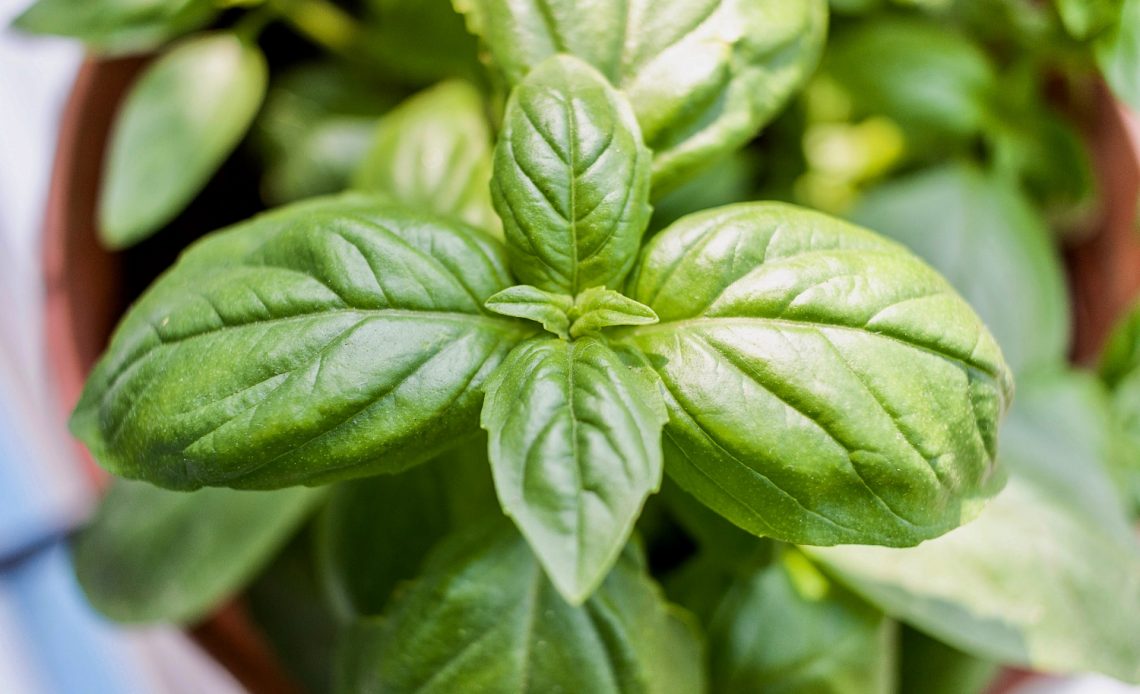

We’re here to help! Wild Yards is a completely free website that is 100% dedicated to helping you create a wildlife-friendly, sustainable yard. Read more
WildYards is reader-supported. When you buy a product through a link on our site, we may earn a comission. Every product is independently selected by our (obsessive) editors and our reviews are unbiased and objective. Read more about our mission or our privacy policy.
A perfect addition to any herb garden, basil’s sweet aroma, and savory, somewhat minty flavor make it a culinary favorite. Basil is easy to grow, thriving in full sunlight when planted in moist, well-drained soils. Its fuss-free nature, coupled with its ability to attract valuable pollinators, makes it an excellent companion plant. Unfortunately, basil isn’t entirely immune to garden pests. It’s not uncommon to find spider mites on basil foliage. But what can you do to eliminate these damaging insects?
You can fight spider mites by spraying your basil plants down with a garden hose. Manually removing the mites with a small paintbrush works well, as does applying insecticidal soap. Diatomaceous earth is effective, too, but should only be used as a last resort.
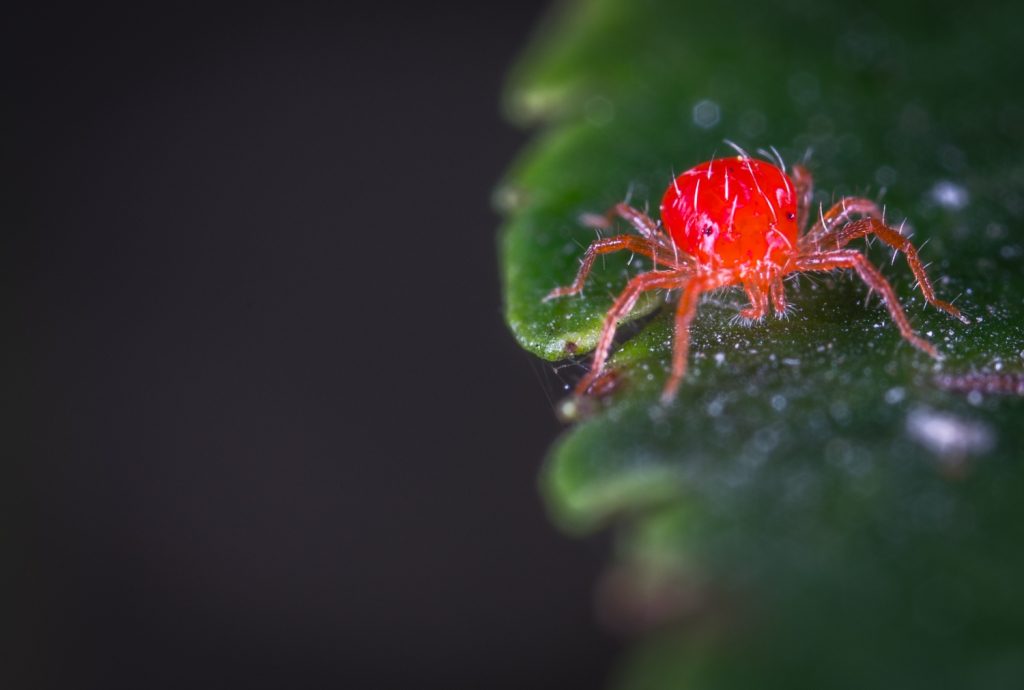
What are spider mites?
Spider mites are arachnids, closely related to spiders and ticks. These garden pests are microscopic, with adults reaching only 1/50 of an inch in length. To the naked eye, spider mites look like tiny red, orange, green, brown, yellow, or white dots that are about the size of a pinprick. In small infestations, they can be nearly impossible to spot. Shining a flashlight through the underside of a plant’s leaves will cast tiny shadows where otherwise invisible spider mites are hiding.
Spider mites thrive in warm, dry environments, so infestations are most common in the summertime. These minute insects use their sharp fangs to suck the sap out of leaves. The proteins present in the spider mite’s saliva suppress the host plant’s natural defense system, causing significant damage over time.
On average, spider mites live for 21 to 28 days. They can lay as many as 100 eggs during their lifetime, with eggs hatching in just 72 hours. Spider mites are so small, they can spread in wind gusts, so a single plant has the potential to infect hundreds more many yards away.
How to tell if spider mites are eating your basil
Like lavender, rosemary, and most other herbs, basil is fairly pest-resistant thanks to its strong odor. But some insects aren’t repelled by its pungent smell, in fact, they actually like it. Caterpillars, slugs, aphids, thrips, Japanese beetles, and spider mites are among the insects most likely to infect your basil plants. If you know your basil plants are infested with insects, how can you tell spider mites are the problem?
If spider mites are eating your basil, then upon closer inspection of the plant, you’ll notice tiny dots moving across the leaves. Spider mites spin webs, usually on the outer edge of the leaf, or where the leaf meets the stem. They use their web networks to make traveling along the leaves easier. The webbing also offers spider mite eggs and larvae protection from predators.
Sometimes, in mild cases, you may not actually see the mites, you may only see evidence that your plant is being eaten by something. If you notice your basil’s leaves are curling, or if the edges of the leaves are turning brown, that’s a good sign that spider mites are lurking in the foliage. Yellow spots, withering leaves, and a plant that just looks generally anemic and unhealthy likely have a spider mite problem, too.
How can you get rid of spider mites on basil?
Once you’ve established that your basil plants are falling victim to spider mites, there’s no time to lose. Here are a few methods for eliminating spider mites so you can help your basil get back to being healthy and strong.
Spray the plants with a garden hose
The first and easiest way to take care of a spider mite problem is to spray the plant’s foliage off with a garden hose. Use a sprayer to knock any adult spider mites off of the plant and loosen eggs and larvae.
Use your fingertips to gently scrub the leaves while rinsing. You may need to spray the plants off several times to get rid of the infestation. Be sure to set your basil in a warm, dry location afterward to help the excess water dry up quickly. Allowing water to pool on the plant’s foliage for long periods can lead to fungal infections — and that’s the last thing your plant needs if it’s fighting a bug problem.
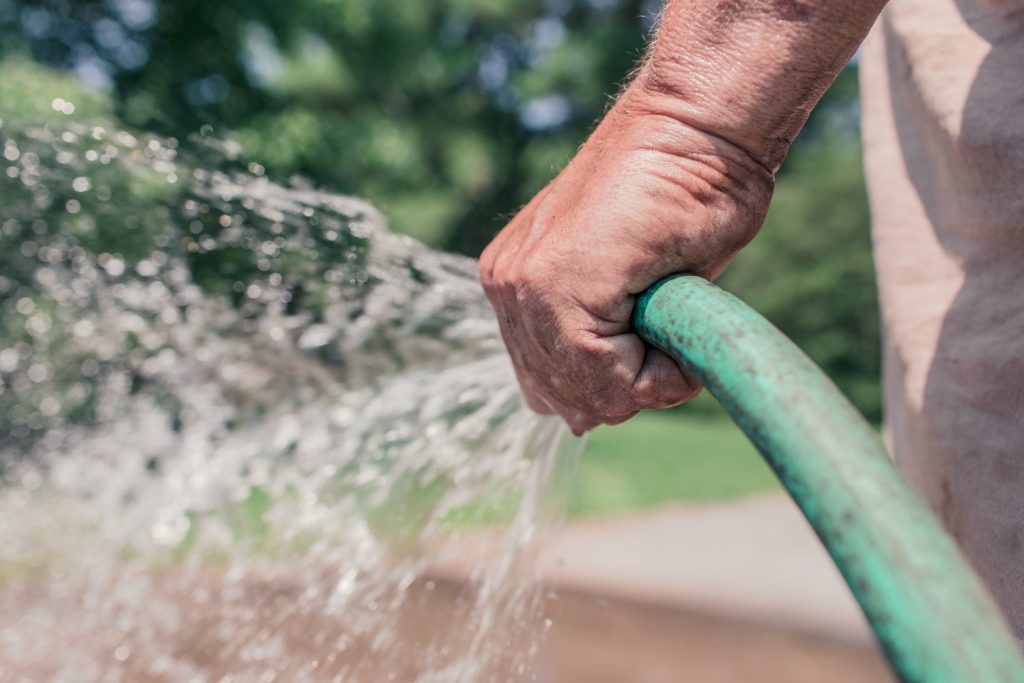
Use insecticidal soap
Insecticidal soap is made of potassium fatty acids that target soft-bodied insects, like worms, aphids, and mites. These fatty acids work by penetrating the insect’s cells and desiccating them, causing them to dehydrate. Compared to most commercial insecticides, insecticidal soap is a low-toxicity solution that’s highly effective.
You’ll need to apply insecticidal soap every 4 to 7 days until all signs of infestation are gone. You should avoid using insecticidal soap as a preventative measure because it can kill good bugs as well as bad ones.
Spray your basil’s foliage liberally with insecticidal soap, targeting areas that show signs of damage or webbing. Insecticidal soap is water-based, so it only works while it’s moist. Once it dries, it’s harmless. Be sure to wear long sleeves, gloves, and goggles when applying insecticidal soap, and avoid applying it on a windy day.
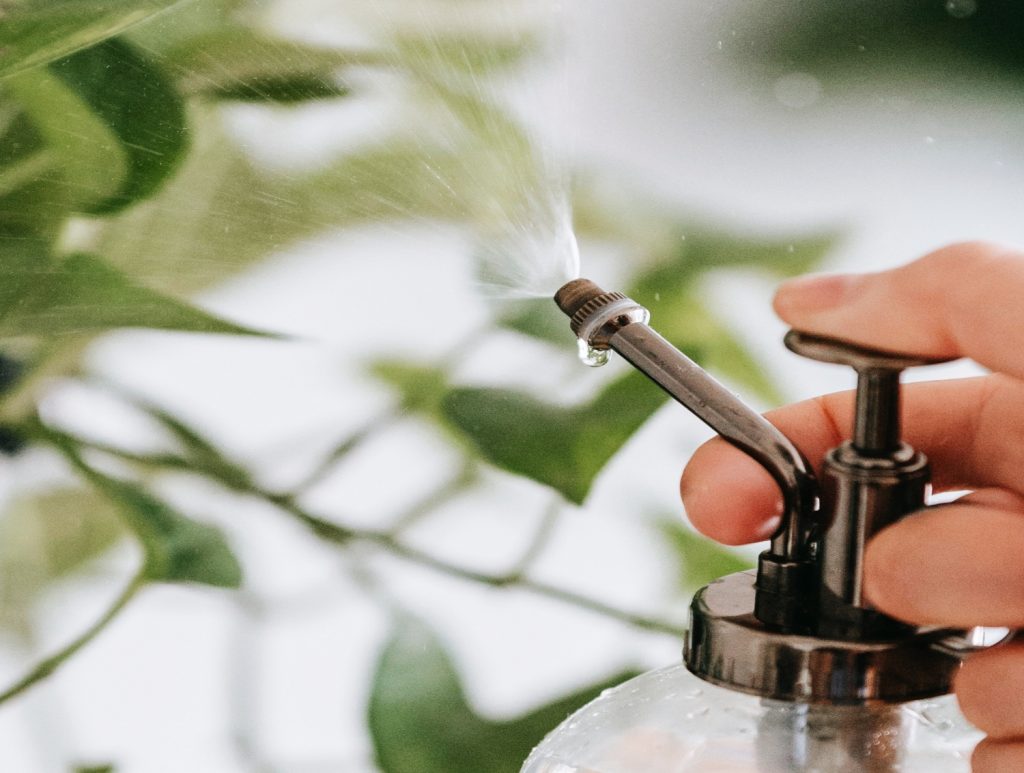
Try essential oils
Neem, tea tree, peppermint, and cedarwood are all excellent essential oils for warding off insects. Use any combination of these essential oils to make a homemade insecticide. Mix 20 drops (1 mL) of essential oils in a spray bottle with 4 ounces of water and shake well. Spray your basil’s foliage, being sure to coat the top and underside of the leaves.
Essential oils have been proven to be highly effective in eliminating spider mites. Dried essential oil dilutions still show activity 7 days after application. Unlike insecticidal soap, essential oil sprays can be used as a preventative measure against spider mites. And, because they’re non-toxic to humans when properly diluted, you don’t have to worry if you accidentally get some on your skin.

Brush the basil’s foliage with a paintbrush
All those pesky webs nestled in between your basil’s foliage can be swept away with the help of a soft bristle paintbrush or makeup brush. To begin, support an infected leaf by holding it flat against your palm. Then, use your brush to gently scrape away the spider mites’ webbing, eggs, and larvae.
Because the spider mite’s web is sticky, you’ll need to clean the brush off every so often. If it becomes caked with gunk, it won’t work as well, so keep a paper towel on hand to work the webbing off of the bristles.

Prune infected sections
Another way to handle spider mite infestations is to prune away infected parts of the plant. Granted, if your entire plant has a spider mite problem, then this strategy won’t work. But if only a few of your basil’s leaves are showing signs of spider mites, then simply snipping them off may be all you need to do to correct the issue.
Use garden shears to prune damaged foliage, trimming away withering stems and cutting off webby leaves at the base. If your basil plant is a good color and appears to be healthy otherwise, you can safely remove up to 50% of the plant if you need to. Just be sure to only prune what is necessary, and wipe your clippers down with rubbing alcohol afterward to prevent the infestation from spreading.
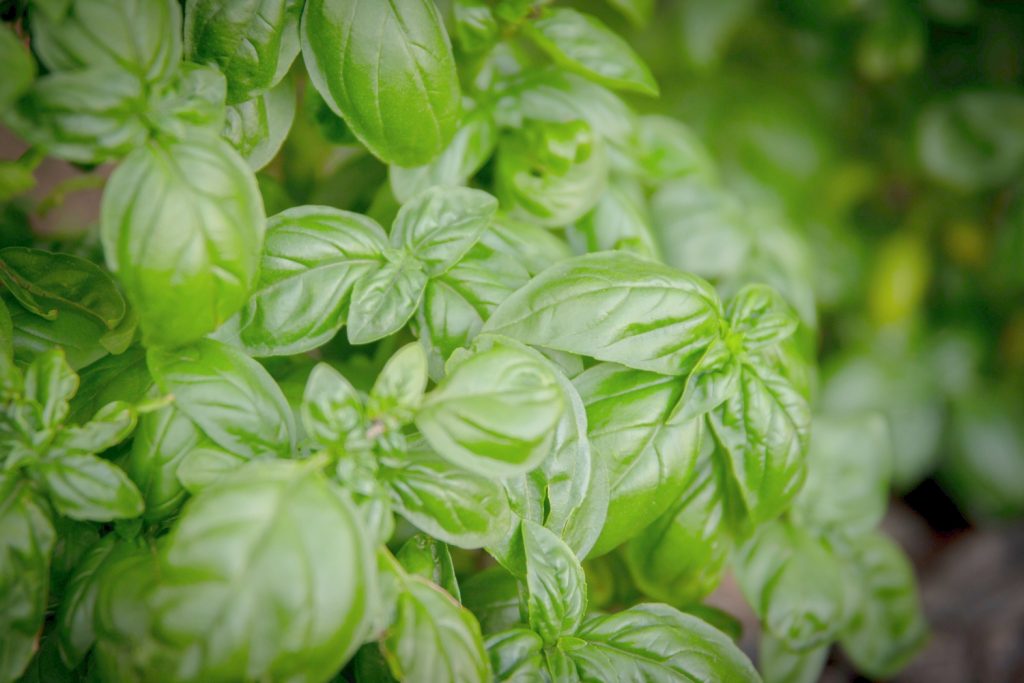
Sprinkle the leaves with diatomaceous earth
Diatomaceous earth is a gray powder made up of microscopic grains of fossilized algae. This jagged sediment penetrates an insect’s bony skeleton and leeches moisture out of the bug’s cells, causing it to dehydrate, not unlike insecticidal soap. But one advantage that diatomaceous earth has over insecticidal soap is that it never loses its effectiveness. It will keep killing spider mites as long as they continue to come into contact with it, regardless of how much time has passed.
There is a downside to using diatomaceous earth, though, and that is that it kills all insects, not just spider mites. Sprinkling diatomaceous earth on your basil’s infected foliage may get rid of your spider mite problem, but it could also end up killing bees, butterflies, and predator insects that like to feed on the pests in your garden.
So, even though diatomaceous earth will certainly help you get rid of your spider mite issue, because it poses such a threat to beneficial insects, we recommend using it only as a last resort. Be sure to wear safety goggles and a mask when applying diatomaceous earth, as it can be very drying to the sinuses.
Should you just toss out basil that’s infected with spider mites?
Spider mites can be hard to spot. By the time you really notice them, they’ve usually done so much damage to their host plant that there’s nothing you can do to reverse it. So if your basil’s case of spider mites is advanced, and the plant’s health is clearly suffering, with yellowed leaves and significant foliage loss, then you’re better off tossing it in the garbage and starting over with a new one. Mild infestations, on the other hand, are usually pretty easy to treat.
By inspecting your basil’s foliage regularly, you can catch spider mites early and take measures to eliminate them before the problem gets out of hand.
